










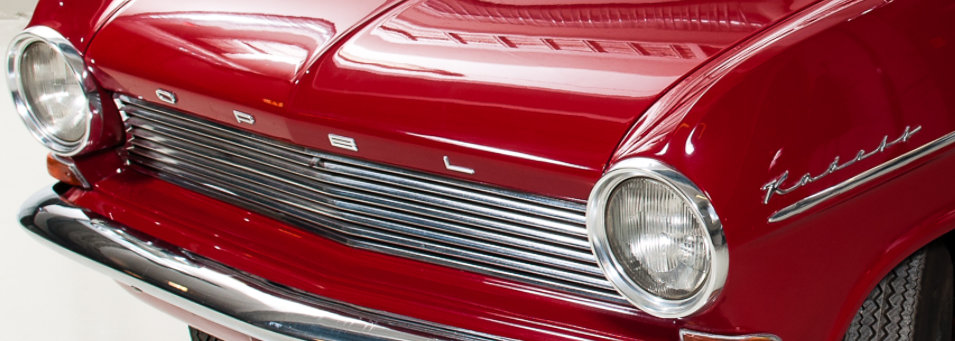

Kadett - discontinued 1940 and re-introduced 1962

Opel Kadett A - 64
The Opel Kadett is a small family car produced by the
German automobile manufacturer Opel between 1937 and
1940, and then again from 1962 until 1991 (the Cabrio
continued until 1993), when it was replaced by the Opel
Astra.
History
The first Opel car to carry the Kadett name was presented to the public in December 1936 by Opel's Commercial-Technical director, Heinrich Nordhoff, who would in later decades become known for his leadership role in building up the Volkswagen company. The new Kadett followed the innovative Opel Olympia in adopting a chassis-less monocoque construction, suggesting that like the Vauxhall 10 introduced in 1937 by Opel's English sister-
construction, suggesting that like the Vauxhall 10 introduced in 1937 by Opel's English sister- company, the Opel Kadett was designed for high volume low cost production.
company, the Opel Kadett was designed for high volume low cost production.
Kadett series 11 234 (1937)
For 1937 the Kadett was offered as a small and unpretentious two door "Limousine" (sedan/saloon) or, at the same list price of 2,100 Marks, as a soft top "Cabrio-Limousine". The
(sedan/saloon) or, at the same list price of 2,100 Marks, as a soft top "Cabrio-Limousine". The body resembled that of the existing larger Opel Olympia and its silhouette reflected the
body resembled that of the existing larger Opel Olympia and its silhouette reflected the "streamlining" tendencies of the time. The 1,074cc side-valve engine came from the 1935
"streamlining" tendencies of the time. The 1,074cc side-valve engine came from the 1935 Opel P4 and came with the same listed maximum power output of 23 PS (17 kW; 23 hp) at
Opel P4 and came with the same listed maximum power output of 23 PS (17 kW; 23 hp) at 3,400 rpm.
3,400 rpm. The brakes were now controlled using a hydraulic mechanism. The suspension featured
The brakes were now controlled using a hydraulic mechanism. The suspension featured synchromous springing, a suspension configuration already seen on the manufacturer's larger
synchromous springing, a suspension configuration already seen on the manufacturer's larger models and based on the Dubonnet system for which General Motors in France had purchased
the license. The General Motors version, which had been further developed by Opel’s North
models and based on the Dubonnet system for which General Motors in France had purchased
the license. The General Motors version, which had been further developed by Opel’s North American parent, was intended to provide a soft ride, but there was some criticism that
American parent, was intended to provide a soft ride, but there was some criticism that handling and road-holding were compromised, especially when the system was applied to
handling and road-holding were compromised, especially when the system was applied to small light-weight cars such as the Kadett. By the end of 1937 33,402 of these first
small light-weight cars such as the Kadett. By the end of 1937 33,402 of these first generation Kadetts had been produced.
generation Kadetts had been produced.
Kadett "KJ38" and "K38 Spezial" (1938-1940)
From December 1937 a modified front grill signalled an upgrade. However, the 1,074cc Opel 23 PS (17 kW; 23 hp) engine and the 2,337 mm (92.0 in) wheelbase were unchanged, and it
23 PS (17 kW; 23 hp) engine and the 2,337 mm (92.0 in) wheelbase were unchanged, and it would have taken a keen eyed observer to spot the difference between the cars for 1937 and
those for 1938.
would have taken a keen eyed observer to spot the difference between the cars for 1937 and
those for 1938. The manufacturer now offered two versions of the Kadett, designated the "Kadett KJ38 and
The manufacturer now offered two versions of the Kadett, designated the "Kadett KJ38 and the "Kadett K38" the latter also being sold as the "Kadett Spezial". Mechanically and in terms
the "Kadett K38" the latter also being sold as the "Kadett Spezial". Mechanically and in terms of published performance there was little to differentiate the two, but the "Spezial" had a
of published performance there was little to differentiate the two, but the "Spezial" had a chrome stripe below the window line, and extra external body trim in other areas such as on
chrome stripe below the window line, and extra external body trim in other areas such as on the front grill. The interior of the "Spezial" was also better equipped. To the extent that the
the front grill. The interior of the "Spezial" was also better equipped. To the extent that the 300 Mark saving for buyers of the car reflected reduced production costs, the major
300 Mark saving for buyers of the car reflected reduced production costs, the major difference was that the more basic "KJ38" lost the synchromous springing with which the car
difference was that the more basic "KJ38" lost the synchromous springing with which the car had been launched, and which continued to be fitted on the "Spezial". The base car instead
had been launched, and which continued to be fitted on the "Spezial". The base car instead reverted to traditional rigid axle based suspension similar to that fitted on the old Opel P4.
reverted to traditional rigid axle based suspension similar to that fitted on the old Opel P4. The base car was available only as a two door "Limousine" (sedan/saloon). Customers looking
The base car was available only as a two door "Limousine" (sedan/saloon). Customers looking for a soft-top "Cabrio-limousine" would need to specify a "Kadett Spezial". For the first time
for a soft-top "Cabrio-limousine" would need to specify a "Kadett Spezial". For the first time Kadett buyers, provided they were prepared to choose a "Kadett Spezial" could also specify a
Kadett buyers, provided they were prepared to choose a "Kadett Spezial" could also specify a four-door "Limousine" (sedan/saloon) bodied car, priced at 2,350 Marks as against 2,150 Marks
four-door "Limousine" (sedan/saloon) bodied car, priced at 2,350 Marks as against 2,150 Marks for a "Spezial Cabrio-Limousine" and 2,100 Marks for a two-door "Spezial Limousine"
for a "Spezial Cabrio-Limousine" and 2,100 Marks for a two-door "Spezial Limousine" In marketing terms the "Kadett KJ38" was intended to fill the niche that Opel had recently
In marketing terms the "Kadett KJ38" was intended to fill the niche that Opel had recently vacated with the departure of the Opel P4, but the KJ38, priced at 1,800 Marks, was more
vacated with the departure of the Opel P4, but the KJ38, priced at 1,800 Marks, was more expensive than the P4 and its reduced specification left it with the image of a car for poor
expensive than the P4 and its reduced specification left it with the image of a car for poor people (..Image des Arme-Leute-Autos..) at a time when economic growth in Germany was
people (..Image des Arme-Leute-Autos..) at a time when economic growth in Germany was finally fostering a less minimalist approach to car buying. The "Kadett K38 Spezial" fared
finally fostering a less minimalist approach to car buying. The "Kadett K38 Spezial" fared better in the market place: in 1938 and again in 1939 it was Germany's the top selling small
better in the market place: in 1938 and again in 1939 it was Germany's the top selling small car. By May 1941 the company had produced 17,871 "Kadett KJ38"s and 56,335 "Kadett K38
car. By May 1941 the company had produced 17,871 "Kadett KJ38"s and 56,335 "Kadett K38 Spezial"s.
Spezial"s.
Commercial
Competitive pricing led to commercial success, and Kadetts continued to be produced during the early months of the war: by the time production ended in May 1940, following intensification of World War II, 106,608 of these Opel Kadetts had come off the assembly line
intensification of World War II, 106,608 of these Opel Kadetts had come off the assembly line at Opel's Rüsselsheim plant, which had been the first major car plant in Germany to apply
at Opel's Rüsselsheim plant, which had been the first major car plant in Germany to apply the assembly-line production techniques pioneered by Henry Ford.
the assembly-line production techniques pioneered by Henry Ford.
Soviet afterlife
After the war, Opel production facilities from Brandenburg an der Havel (trucks) were crated up together with the production line plant and tooling from the Ruesslesheim (cars) plant
up together with the production line plant and tooling from the Ruesslesheim (cars) plant and transported to the Soviet Union, along with the drawings and plans for the Kadett, as
and transported to the Soviet Union, along with the drawings and plans for the Kadett, as part of a larger reparations package agreed upon by the victorious powers. From 1948, the
part of a larger reparations package agreed upon by the victorious powers. From 1948, the prewar Kadett was manufactured as the Moskvitch 400/420 and continued to be produced,
prewar Kadett was manufactured as the Moskvitch 400/420 and continued to be produced, very little changed, on the edge of Moscow until 1956.
very little changed, on the edge of Moscow until 1956.

1964
 Engine
993 cc
4 cylinders
Power
40 HP
Top Speed
120 km/h
Weight
700 kg
Engine
993 cc
4 cylinders
Power
40 HP
Top Speed
120 km/h
Weight
700 kg
 The collections Kadett is restored to
as new condition. During the time of
restoration the importer Metro-Auto
sold out last spares for this model.
That made a full engine and
technical restoration a breeze.
The collections Kadett is restored to
as new condition. During the time of
restoration the importer Metro-Auto
sold out last spares for this model.
That made a full engine and
technical restoration a breeze.
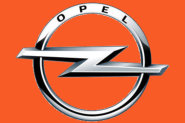
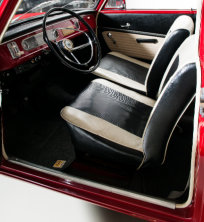
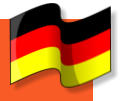
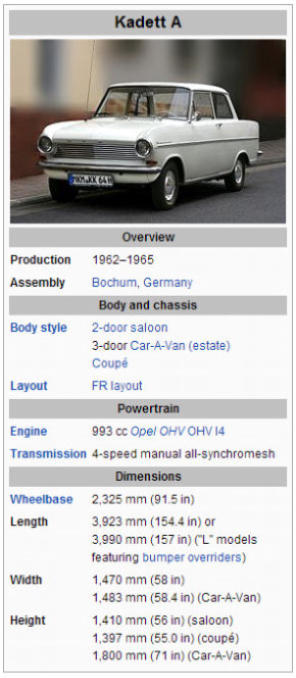
Photos mainly by Matti Kreivilä. Historical facts and technical details of the vehicles provided by Wikipedia. Movies YouTube.






